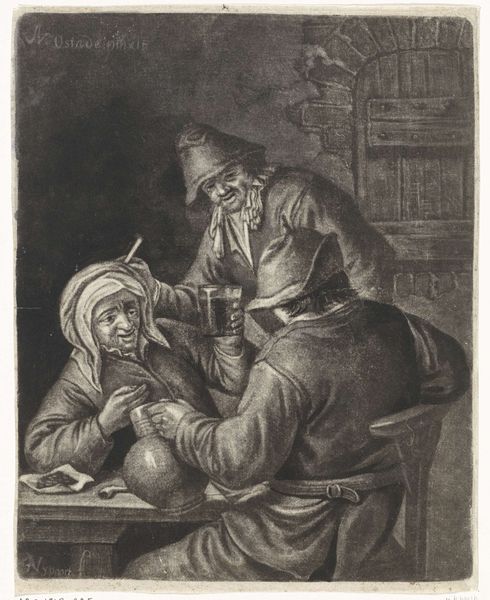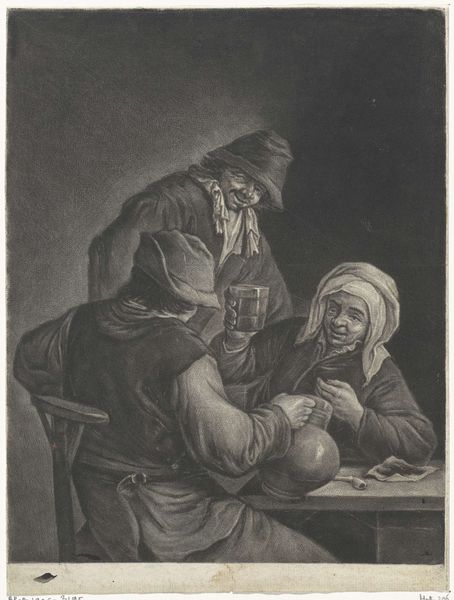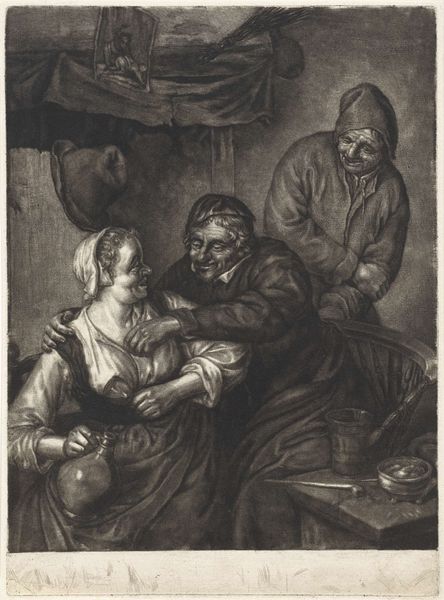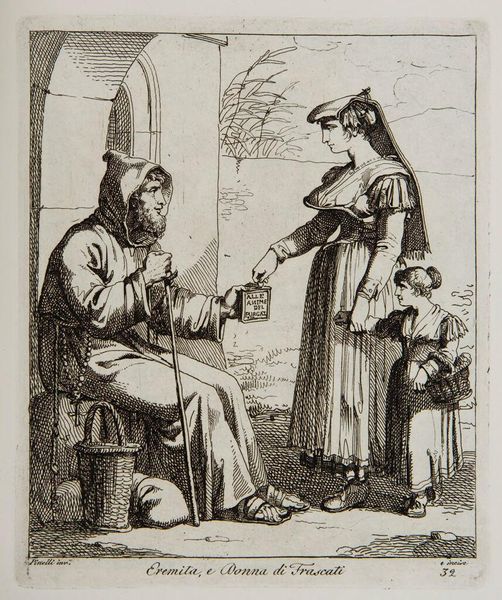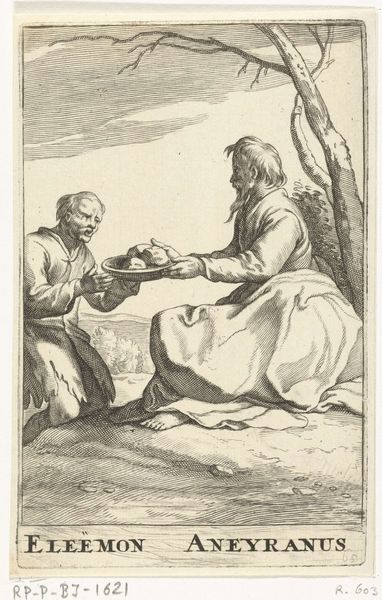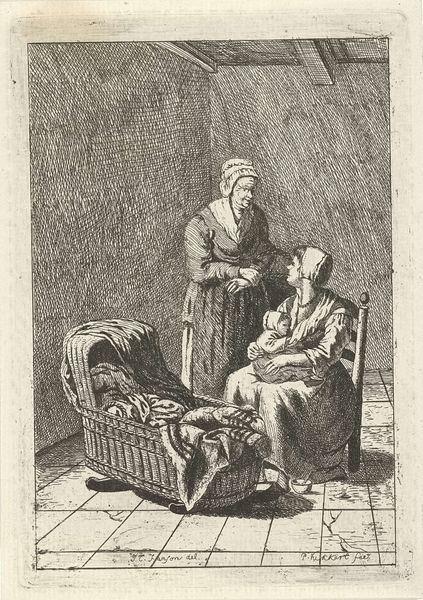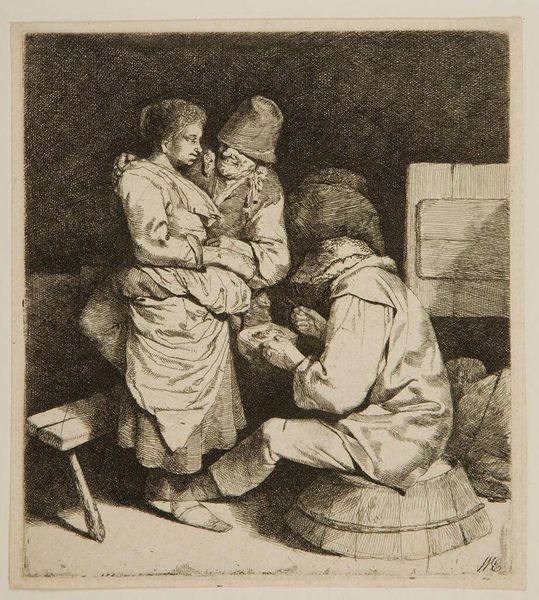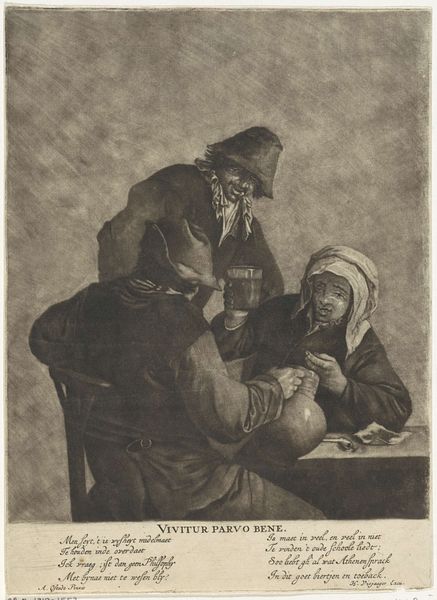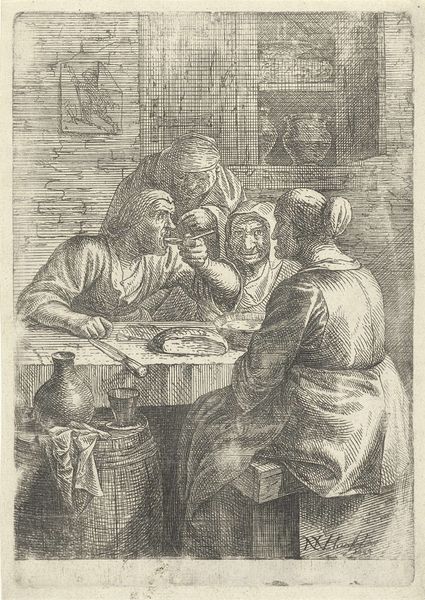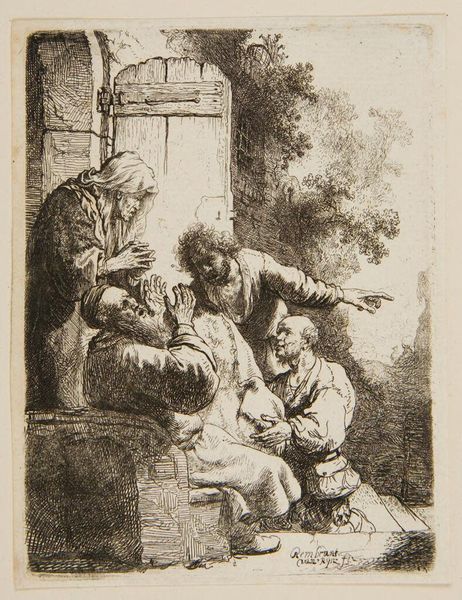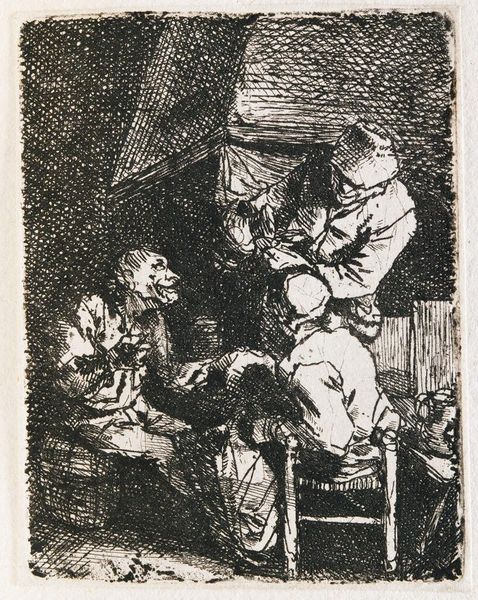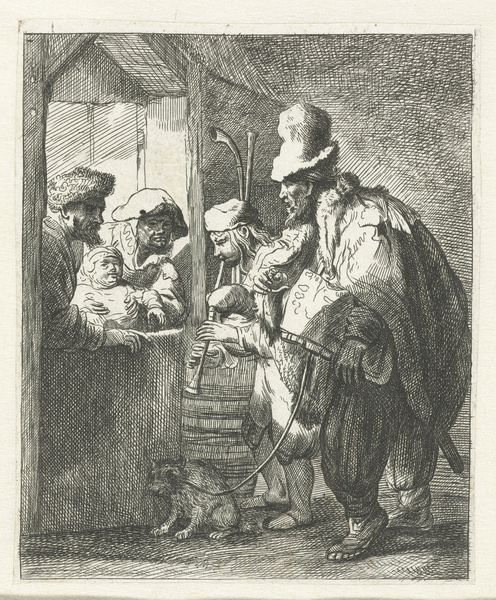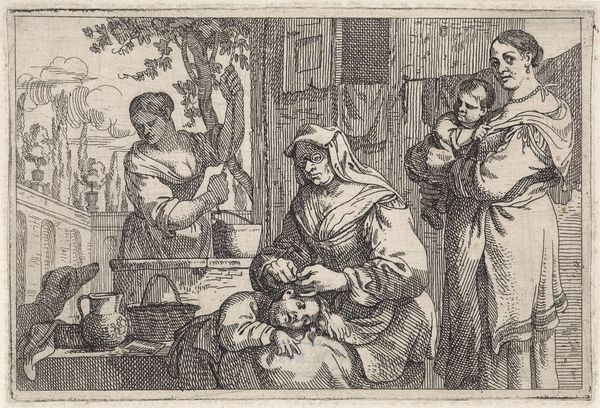
print, engraving
#
baroque
# print
#
group-portraits
#
line
#
genre-painting
#
engraving
#
realism
Dimensions: 7.4 x 5.6 cm
Copyright: Public domain
Curator: Before us is Adriaen van Ostade's "The Drinkers," an engraving dating back to 1658. It’s currently housed at the Museum Boijmans van Beuningen in Rotterdam. Editor: The overriding impression for me is…claustrophobia. The figures are so close together, and the density of the lines only serves to make the image feel more packed. There is also something unsettling in their caricatured physiognomies. Curator: Indeed. Ostade has achieved remarkable detail using just line and varying hatching techniques. The density does confine the composition, almost trapping the figures within. Let's note that the artist focuses on details: the wrinkles on their faces, the smoke wafting in the air, or the texture of their clothes. The composition shows mastery of engraving. Editor: As for its reception, it reflects the popular 17th-century theme of genre scenes focusing on everyday life, especially among the lower classes. There’s this voyeuristic element. Was the artist simply representing life as it was, or passing a societal judgment? This begs us to consider how viewers from different socio-economic classes and locations have responded to this work over the centuries. Curator: Ostade does invite that scrutiny, doesn't he? Note the tonal contrasts achieved simply through the line work. Light seems to pool in certain areas – faces, for example – while the rest remains shrouded, further emphasizing the intimacy – perhaps the seediness – of the setting. Consider the almost exaggerated expressions. They’re not just drinking, but performing a role for… someone, even if that someone is only us as viewers centuries later. Editor: Right! The performative aspect adds another layer to the discussion. Do the social and political circumstances of 17th-century Netherlands change how we view a scene like this? Does it serve to critique social ills or just record them? This is a crucial consideration. Ostade likely circulated among circles critical of social inequalities; the engraving process ensured his critique could spread more widely. Curator: The perspective adds an interesting dimension too. It’s as though we're intruding, peeking in on a private gathering… a glimpse into ordinary yet carefully constructed circumstances. The use of stark tonal contrasts to draw the viewer into a shadowy, and questionable, setting cannot be overlooked. Editor: Yes, it offers a unique window into the intersection of art, politics, and the evolving social structures of the Dutch Golden Age. The print is an important work and offers a lasting dialogue between artistic mastery, historical context, and persistent societal questions about representation and judgement. Curator: Indeed. It exemplifies how close study of formal qualities coupled with attention to history offers a complex vision.
Comments
No comments
Be the first to comment and join the conversation on the ultimate creative platform.
